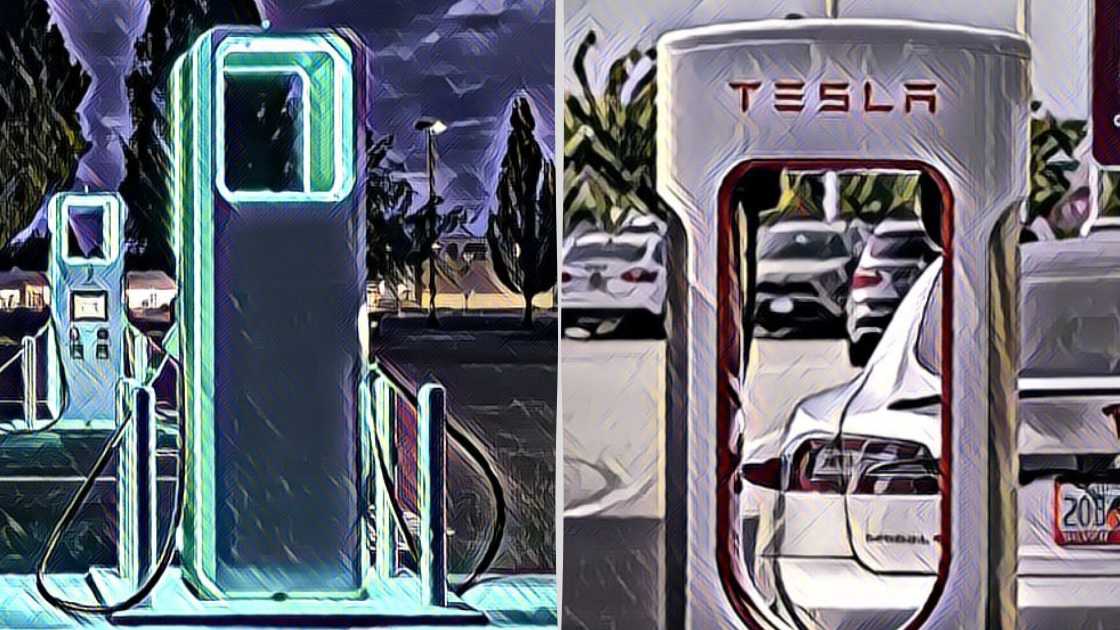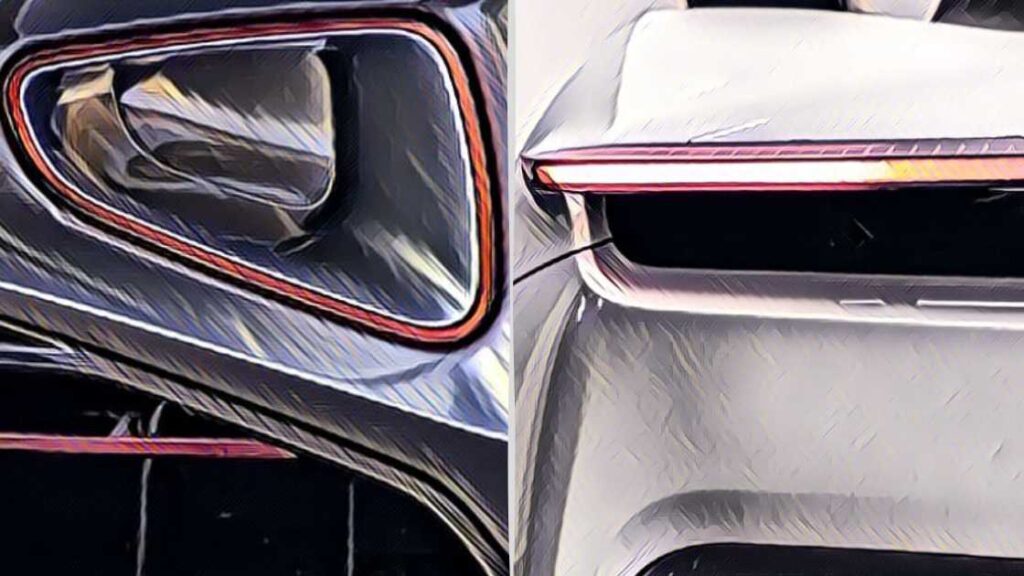What are the EV charging connector types? We take a look at the different electric vehicle charger types for those looking at an EV charger installation.
EV Charging Connector Types
We look through the EV charging connectors, their power capacities, the regions they serve and what electric vehicles they’re compatible with.
Type 1 (SAE J1772)
First introduced in 2009, the 5-pin Type 1 (also known as the SAE J1772) EV charger is one of the earliest EV charging connector types introduced and is mostly used in North America and Japan. The single-phase AC plug can charge at a speed of up to 7.4 kW (240V, 30A) and was introduced on the first generation Nissan Leaf, Mitsubishi i-MiEV, Ford Focus Electric and Honda Fit EV.
The Type 1 is less common today due to its limited charging capacity, as manufacturers opt for higher rates of charging capability. The plug is also susceptible to being stopped suddenly as it is only locked in with a hook that can be manually operated by pressing it down with a thumb.
Type 2 (IEC 62196 or Mennekes)
Initially proposed in 2009, the Type 2 charger started going into production in 2013 following the European Union’s decision to use the Type 2 EV charging connector type as their official AC charging plug. Vehicles in Asia started adopting it from 2018 onwards and most other countries worldwide have also followed suit. It’s become one of the most common EV charger installations worldwide.
The Type 2 charger is flexible in its power delivery and it can support both AC single-phase and three-phase charging. It can support a home charging power rate of up to 22 kW, and up to 43 kW at public charging stations. The plugs also have openings on both sides that allows it to be locked automatically which stops unwanted charging interruption or theft of the cable.
Popular models including the BMW i3, Volkswagen ID.3 and ID.4, Renault Zoe, and models from Hyundai, Audi and Porsche have all adopted the Type 2 charger.
CHAdeMO (CHArge de MOve)
One of the most popular EV charging connector types in Japan is CHAdeMO. Produced since 2009 it’s an abbreviation of the words CHArge de MOve which represents “Charge for Moving”. The Japanese phrase “o CHA deMO ikaga desuka” translates into English as “how about a cup of tea”, a reference to how long it would take to charge a car on CHAdeMO.
Quick charging through high charging capability and bidirectional charging was developed. The first generation CHAdeMO chargers allowed up to 62.5 kW high-voltage DC charging and has evolved with the second generation charger delivering power up to 400 kW.
CHAdeMO is primarily used in Japan as well as some parts of Asia. Some of the biggest electric car companies have used CHAdeMO especially R-N-M, and even earlier Tesla models. In Europe and North American particularly, CHAdeMO appears to be phasing out and its days are numbered in those regions.
CCS (Combined Charging System)
The Combined Charging System (CCS) EV charger type can utilise Combo 1 (CCS1) or Combo 2 (CCS2) EV charger connector types to provide power at a rate of up to 350 kW. CCS1 and CCS2 are extensions of Type 1 and Type 2 respectively, and the CCS charger allows for both AC and DC charging.
First proposed in 2011, CCS has been a requirement for the European Union’s EV charger installation network since 2014. Its popularity continues to increase due to its versatility. The CCS plug uses the same socket as the Type 2 plug but has two additional prongs that allows DC power to be delivered to the car.
By unifying the existing Type 1 and Type 2 EV charger types for high-power charging, it also allows for slow charging and supports both AC and DC charging, which gives flexibility to charge at a big range of power levels. With the exception of Tesla and outside of China, most manufacturers are using CCS as the EV charger installation standard.
North American Charging Standard (SAE J3400)
The North American Charging Standard (NACS), also known as the Tesla charging standard, was developed by Tesla since 2012 and has become by far the most common charging standard in North America.
Tesla’s proprietary charging connector was renamed to North American Charging Standard in 2022 and is so popular, other manufacturers have shifted towards utilising NACS.
In 2022, Tesla opened up NACS to be used by other manufacturers and Acura, Fisker, Nissan and Rivian among many more, have started to adopt the NACS EV charger type. Volvo will also be using NACS as of 2025.
The advantages of NACs is that it can offer AC charging speeds of up to 250 kW within the Tesla Supercharger network, and is half the size of the CCS EV charger connection. The Tesla Supercharger network is also well developed in North America and are strategically placed along highways and in high-traffic areas.
GB/T
The GB/T charging standard was first designed in 2009 and production took place in 2013. In 2015 it became standardised in China. It looks the same as the Type 2 plug however the pins and receptors are reversed.
Used almost exclusively in China, GB/T EV charger connectors can support power delivery at levels of up to 60 kW for AC charging, and 240 kW for DC charging.
Similarly to the Type 2 charger, GB/T is versatile, convenient and has been scaled up across public fast-charging stations, albeit only in China. Chinese manufacturers integrate GB/T in their cars for the Chinese market which is seen by manufacturers including BYD, NIO, Great Wall Motors and Li Autos.




